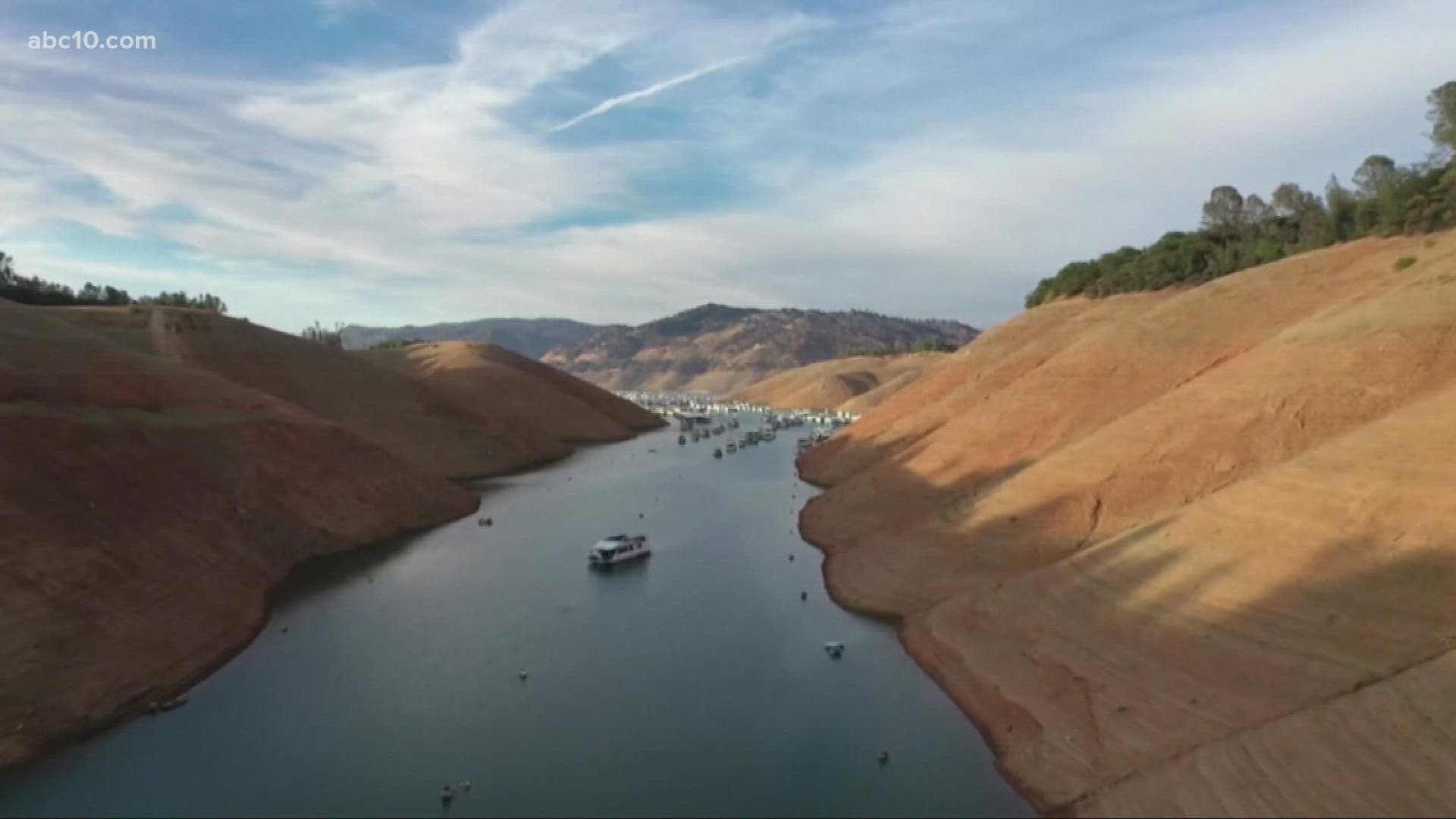CALIFORNIA, USA — What started as record rain in October and record snow in December has led to storm silence in January.
The biggest reservoirs and dams are seeing 35%-56% of capacity. Folsom Dam sits at 56%, Oroville is around 45%, and Shasta is 35% full.
"We need more and more of these storms that keep coming through. We need January, February, March, and April," said Sean de Guzman, snow survey manager with the Department of Water Resources (DWR).
DWR and the United States Geological Survey (USGS) estimates 140% of average precipitation is what's needed to actually get out of a drought.
Sacramento Executive Airport's normal precipitation in a water year is about 18.14 inches. As of Jan. 19, 14.42 inches has been recorded. We are now shy 3.72 inches of rain to return to normal.
Getting Northern California out of a drought is another story. Currently, Sacramento would need 10.78 inches to get out of the drought situation. The problem is, there are only about 3 more solid months to receive considerable precipitation. Instead of the normal 18.14 inches of rain, this water year would need 25.2 inches.
"I know Folsom Lake is still currently above average, but they are currently releasing flood releases out of Folsom Lake. But that, really the main reason for that, is due to flood control," de Guzman said.
The conundrum for water planners is finding the balance between how much water to release and how much can be stored for future drought.
“I think the future for addressing climate change is not only conservation, but all these kind of innovative storage technologies and processes," said Amy Talbot with the Regional Water Authority.
Talbot says conserving water isn't the only solution. California has to find ways and other infrastructure, like underground water basins, to support future droughts.
"When we get excess surface water, we kind of hide it away essentially underground. And then, when we don't have enough surface water, we can pull that water back out of the ground and use it" Talbot said.
Only time will tell how much more rain we could see across Northern California.
WATCH ALSO:



















